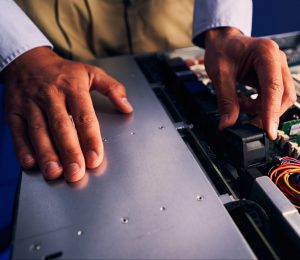How to Develop a Hardware Refresh Cycle
A hardware refresh cycle is when you upgrade you or your company’s hardware and software as needed. Benefits include saving information, increasing efficiency, and improving safety. Here’s how to develop a hardware refresh cycle:

1. Assess Your Hardware Needs
Any hardware refresh should start with a closer look at your systems. This means knowing what kind of hardware it is, how old it is, and how much storage is used. This will better prepare you for the updates.
2. Future Needs
After knowing what hardware you have or what it is lacking, you will want to conduct some research and decide what routine updates will be required of your hardware in the future. This is also a good time to locate receipts, and know purchase dates and any warranties you may have.
3. Disposal of Old Hardware
After assessing your current hardware, you may need to upgrade the system completely. In order to do this, you will want to make sure the hardware company has a warranty program. If they do, you may be able to get it replaced at a lower price. If not, this is when you will want to wipe your system and properly dispose of it.
4. Different Types of Hardware
You may not know that there are many different types of hardware including, personal computers, central processing units, random access memory, hard disks, internal hard drives, mobile devices, and servers. It is important to choose the right one for you or your business.
5. Purchase

Once you have an idea of what software you want, you can choose to either purchase it or lease it. Both have their pros and cons. For more information on buying vs leasing IT equipment, read here.
Keeping your hardware up-to-date will not only increase productivity, but it will also improve your business’ safety. It is important to conduct a hardware refresh cycle regularly.
Not sure what technology is better for your business? Westec Services can help! Feel free to contact us for more information or questions you may have.






 2916 West TC Jester Blvd.,
Suite 104
2916 West TC Jester Blvd.,
Suite 104 sales@westecservices.net
sales@westecservices.net